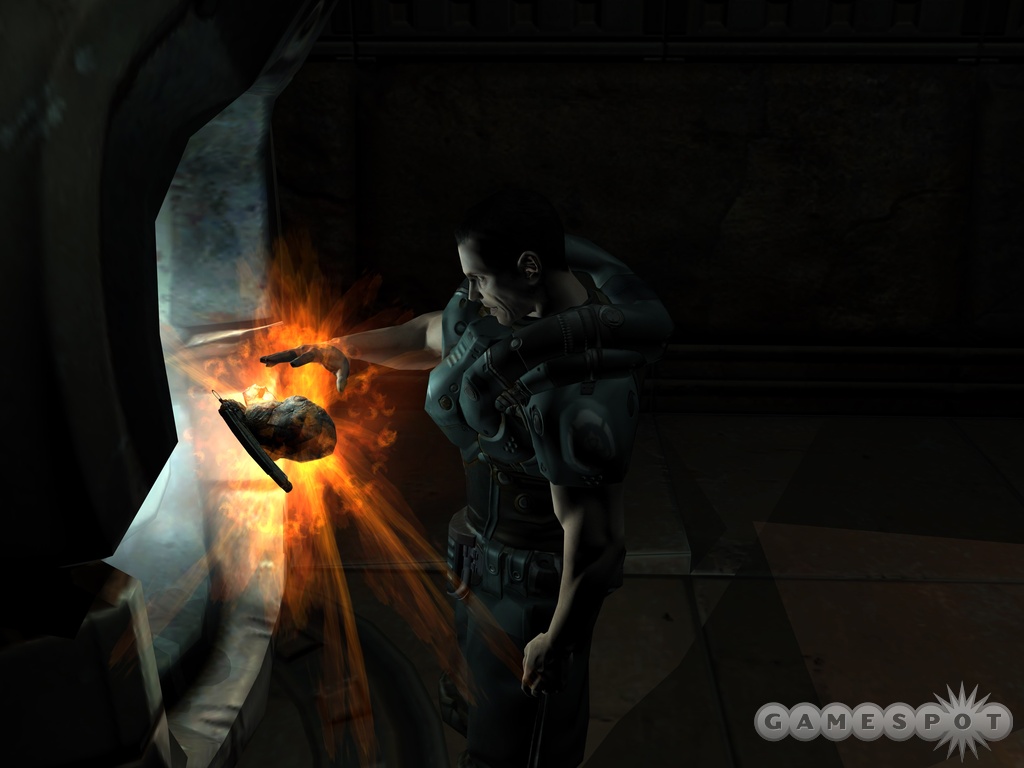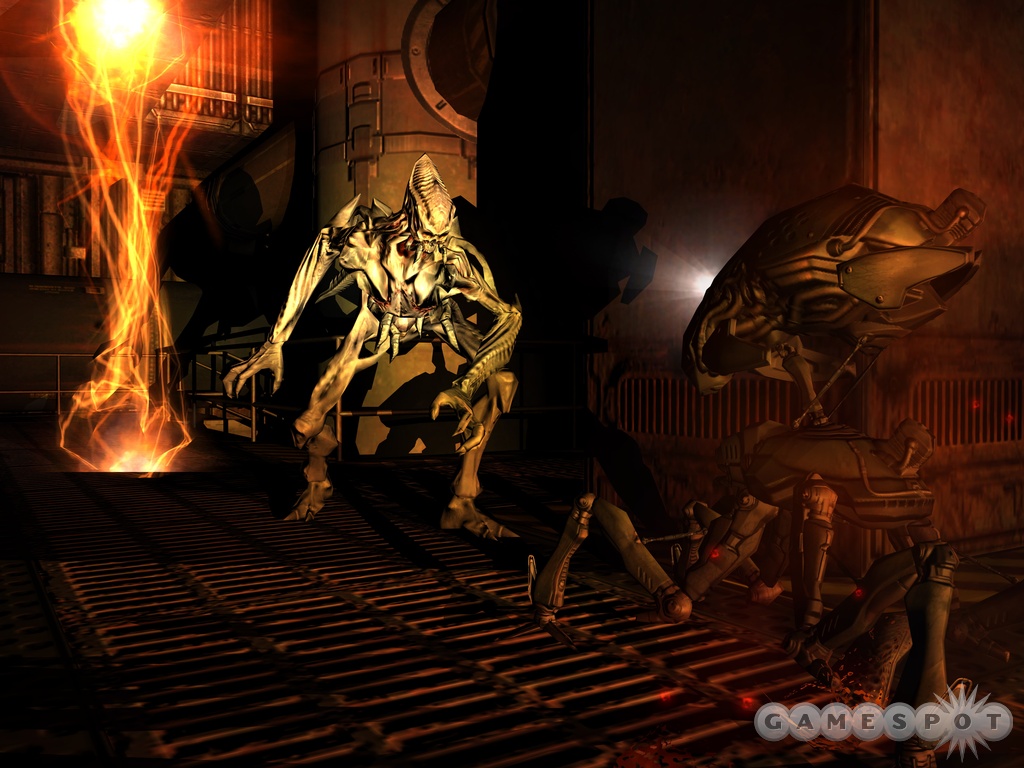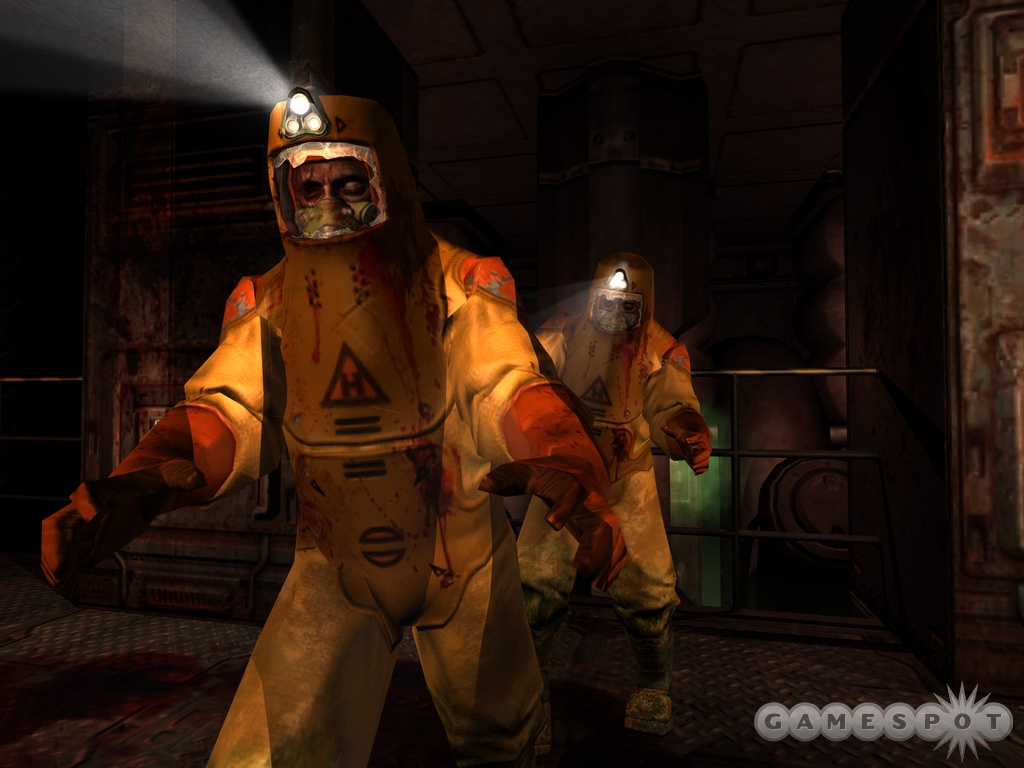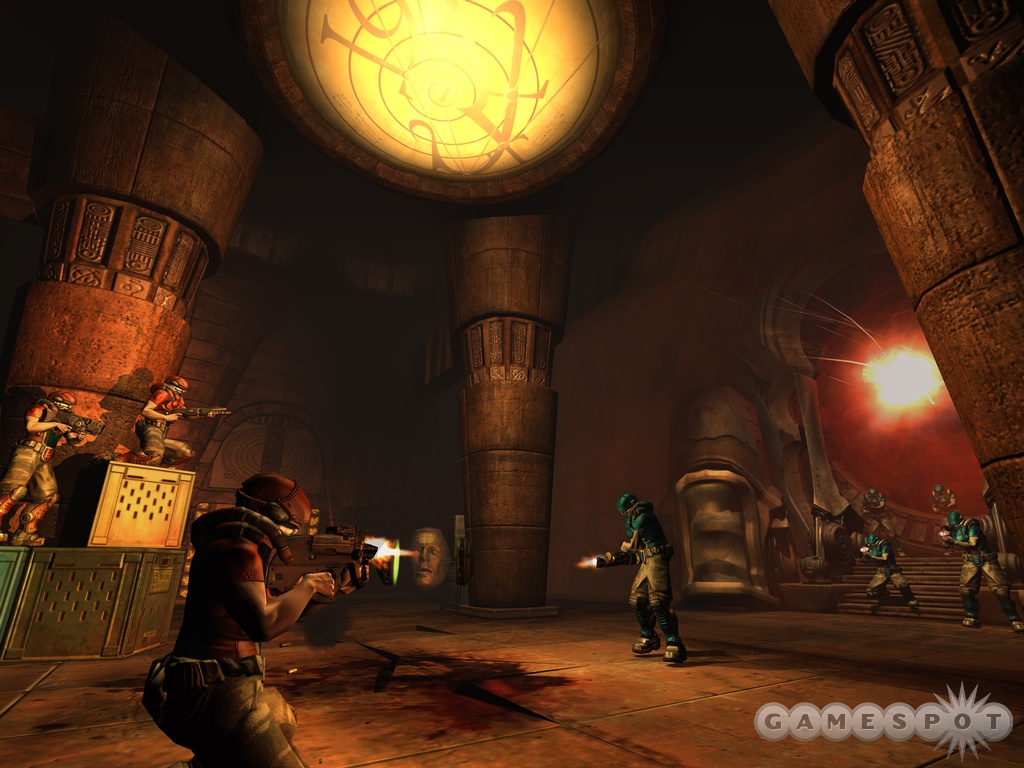Doom 3: Resurrection of Evil Hands-On
We play both the single-player and multiplayer portions of the Doom 3 expansion and come away impressed.
There were few games more anticipated last year than Doom 3, the long-awaited return of the Doom series--the great-granddaddy of first-person shooters. And Doom 3 turned out to be a technological tour de force and is still easily one of the best-looking games that you can play on any platform. Now Activision and id are reloading with Doom 3: Resurrection of Evil, an expansion pack that began development early last year. Under development by Nerve Software, Resurrection of Evil promises to serve up even more of the gory first-person action that we've come to expect from Doom. We recently had the opportunity to try out both the single-player and multiplayer portions of Resurrection of Evil, and we came away impressed with the expansion, particularly with how it seems to try to improve on some of the issues in the original game.

There's little time wasted in setting up the game's premise, which is explained in an in-game cutscene when you start up a campaign. The gist of the story is that after abandoning Mars after the events of Doom 3, humanity is once again drawn back to the red planet. With typical human hubris, the Union Aerospace Corporation is again setting up operations on Mars, but this time with even more marines to defend against what happened before. Your character is one of the nameless marines sent deep underground to explore the ruins of an ancient civilization, where a mysterious signal is detected. After entering a long-sealed room, you're drawn to a strange relic levitating in the air. In perhaps not so wise a move, you pick it up and, in the process, reopen the gates to hell. Your fellow marines are vaporized by strange mystical energy, and you find yourself alone and outnumbered by all sorts of hellspawn. Naturally, that's your cue to cowboy up and save our dimension from demonic invasion.
Resurrection of Evil doesn't do much to enhance or improve the existing game engine, but that's probably because the Doom 3 engine still remains on the cutting edge. This expansion looks just as sharp and striking as the original game did last year, and it certainly benefits from the new setting. The opening levels of the expansion are set in ruins and caves, which have a much different feel from the "tech hallway after tech hallway" look that dominated the early levels of the original. You'll enter caverns with lava pits, explore dusty old rooms, and get lost in an exquisitely rendered world. Along the way, you'll battle all sorts of demons, some returning from the original game while others are brand new. These include new types of zombies, as well as a nimble demon that likes to teleport around and leap at you.

At your disposal will be a range of weapons, many of which will be familiar since they're taken from the original game. These include the assault rifle, the combat shotgun, the pistol, and the pulse rifle. While the expansion pack does introduce a special suit with a flashlight built into the helmet, you'll still have to toggle between flashlight and weapon throughout parts of the game. Resurrection of Evil introduces several new weapons, including the double-barreled shotgun, which packs a huge punch capable of flooring most demons with a single shot. That's the goods news. The bad news is that you have to reload the double-barreled shotgun after every pull of the trigger, so it's not so ideal when you're being overwhelmed by monsters. Still, when you want something dead fast, it's an extremely potent weapon.
The next new weapon is the grabber gun, which lets you pick up and throw objects and manipulate the game's physics engine in many ways. It works much like the gravity gun in Half-Life 2. We experimented a bit with the grabber to pick up rocks and hurl them at enemies, but that wasn't so effective since it's a bit hard to hit a moving target that way. The grabber is far more useful to retrieve ammo, armor, and health packs from a distance, as well as to clear obstacles in your path. That said, the first boss that you will encounter will require you to use the grabber gun to capture balls of energy fired by a nearby sentry gun and redirect them the boss's way. The grabber has a limited amount of energy, though, so you can hold onto an object for only a few seconds before its charge runs out. You'll then have to let the grabber recharge, which takes a few seconds.
From Hell
The last notable new weapon that we played with was the relic, which is the object that started this whole new mess when you picked it up. The relic looks like some kind of weird demonic heart, and it really comes into play after you take down the first major boss, because it captures the boss's power, making it your own. In the case of the first boss, that power is "hell time," which lets you temporarily slow down time around you while you retain the ability to move at regular speed. Hell time is treated differently from other slow-motion modes found in other games, mainly by the cool way that hell time blurs the colors on the screen. 
Naturally, hell time has many applications both in and out of combat. For instance, hell time will let you tackle multiple enemies simultaneously in combat, and it's especially useful when you're running low on health, as it can even up the odds considerably. Meanwhile, hell time will also let you pass through difficult traps that you would otherwise not be able to negotiate at regular speed. Hell time is certainly great, but there is a limit to the number of times you can use it. Mainly, the relic must be recharged by absorbing the souls of your dead comrades. When you encounter a dead human body, simply equip the relic and you'll see the red aura of its soul. The relic can hold only three souls at a time, so if it has spare room it will absorb the souls of the fallen.
We battled our way through the first three levels of the game, and the good news so far is that we encountered no "monster closets" throughout the opening levels (monster closets being those countless hidden little rooms in the first game whose only purpose it seemed was to open up after you passed by and release a zombie or demon behind you). They admittedly seemed a bit contrived, so it's nice to see that Resurrection of Evil doesn't seem to rely on these as much as the first game did. That's not to say that enemies won't appear out of thin air, however. These are the spawn of hell that you're dealing with, so demons will still teleport into the room that you're in, but at least teleportation is a bit more logical than random spawns.
Judging from the number of puzzles that we encountered, you won't just run-and-gun your way through the game, either. One common puzzle that we encountered involved locating and recovering batteries from certain devices so that we could plug them into other devices. For instance, you may need a battery to power up a security door so that it can open, or you'll discover that an elevator needs power in order to work. In addition to picking up batteries, you'll once again recover voice logs, e-mails, and other data that you can access via your personal digital assistant. These messages not only provide background to the game's story, but also offer clues, not to mention access codes for the many lockers that you'll encounter.
We had a chance to check out both deathmatch and capture-the-flag multiplayer modes, as well as some of the new maps, and the good news is that multiplayer plays fast and looks great. This was to be expected, since Nerve previously worked on the popular multiplayer component for 2001's Return to Castle Wolfenstein. Resurrection of Evil still supports up to eight players officially, and the levels are designed to accommodate that number without feeling too cramped. We were particularly impressed with one of the capture-the-flag levels, which was roomy and offered plenty of different routes between the bases. Meanwhile, everything was clearly labeled or color-coded so you can orient yourself effortlessly. Then again, the expansion's capture the flag maps are being provided by Threewave Software, a longtime multiplayer collaborator with id software for the Quake series.

On the whole, Resurrection of Evil feels like it has improved on the Doom 3 formula. The expansion thus far feels better paced, with fewer of the contrivances that stuck out in the first game. And it's fun to play around with the supernatural powers at your disposal. Strange as it may sound, it's enjoyable to turn on hell time and dive into a pack of demons or zombies, blasting them away and watching the body parts and blood slowly arc through the air in slow motion. Of course, the big question is whether Resurrection of Evil can maintain this momentum throughout the expansion, but we'll find out in April when it's scheduled to ship.
Got a news tip or want to contact us directly? Email news@gamespot.com
Join the conversation